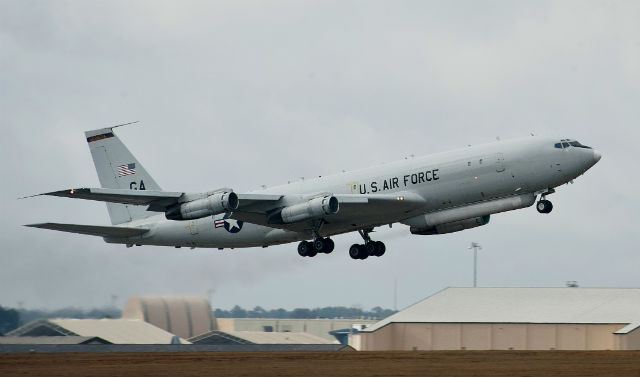The US Air Force’s proposed acquisition of a next-generation JSTARS battlefield management platform faces an uphill struggle to secure the required funding, and would be cancelled altogether if some within the Pentagon had their way.
The service’s top weapons buyer Bill LaPlante confirms what industry sources have been saying for some time: that higher echelons of the US Department of Defense are strongly opposed to replacing the ageing Northrop Grumman E-8C Joint Surveillance Target Attack Radar System (JSTARS) and would instead spend the money on unmanned systems or other priorities.
In his final press engagement before retiring from the role, LaPlante said the air force is “completely set on the requirement” to replace the E-8C, which is based on outdated, repurposed Boeing 707-300s purchased second-hand.
“We’re all-in,” says LaPlante. “The situation is urgent. Eight or 10 were in depot, and they’re going to fall out of the sky in 2017. They’re used 707s bought as cattle cars back in the 1980s.
“The warfighter needs it, but when it gets up to the larger debate within the enterprise, and this has been going on for a long time, even before I came, there’s people who want to trade it for the unmanned [Northrop Grumman] Global Hawk as a sensor. That debate keeps opening up.”

The first two Grumman-integrated E-8 test aircraft flew combat missions during Operation Desert Storm in 1991.
US Air Force
The air force is seeking 17 business jet-based JSTARS platforms by 2026, and Boeing, Northrop and Lockheed Martin are the prime contenders. However, the programme is still awaiting “milestone A” approval from the Pentagon’s acquisition office and could potentially even be dropped from the president’s 2017 defence budget due out in January or February.
The programme is worth an estimated $6.5 billion to $9 billion and the three industry teams are already on contract for early engineering work ahead of a formal competition in 2016 or 2017.
“It’s a collective decision that ultimately goes up to the secretary of defense and the [chairman of the joint chiefs of staff],” says LaPlante.
The E-8C carries a 7.3m, side-looking phased array antenna that can detect and track enemy ground movements over a 50,000km² area, and its onboard battle managers relay that information to ground units. According to LaPlante, some opponents view JSTARS as just another intelligence, surveillance, and reconnaissance asset, dismissing its battle management and command and control capabilities.
The radar-carrying Northrop RQ-4 Global Hawk Block 40 – which the air force has proposed mothballing if defence spending is cut – also performs ground-moving target indication (GMTI) and has synthetic aperture radar remote sensing, but cannot completely match the capabilities offered by JSTARS.
“The classic warfighters look at JSTARS as a battle management and command and control platform that happens to have a good GMTI sensor,” LaPlante says. “If you look at how they’re using JSTARS in the fight today, it’s incredible what it’s doing.”
Source: FlightGlobal.com
















